Finches are some of the most cheerfully coloured birds to appear in our gardens.
With vivid colours of bright yellows to deep reds, they are incredible creatures! There are 13 species of finches in Canada: Evening Grosbeak, Pine Grosbeak, Gray-crowned Rosy Finch, House Finch, Purple Finch, Cassin’s Finch, Common Redpoll, Hoary Redpoll, Red Crossbill, Cassia Crossbill, White-winged Crossbill, Pine Siskin, and the American Goldfinch. If you’d like to attract them to your garden we have seven tips to help you!
1. Give them shelter.
All birds need shelter from strong winds, rain, cold, hot sun and predators. Growing evergreens like spruce, hemlock and pine trees in your backyard will give finches a place to find refuge during the cold winter months and an area to get out of the hot sun in summer. Plus they offer a great spot to hide from predators!
2. Keep your feline friends indoors.
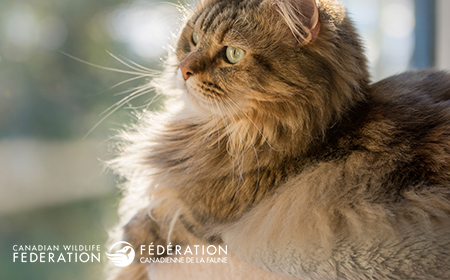
Every year in Canada, 140 million birds and small animals are killed by domestic cats. Considering domestic cats aren’t native to Canada and are happy to roam far and wide to kill prey – from mice to birds (like finches!), it’s important to keep your cats indoors to give the wildlife in your backyard a chance for survival. Feel like keeping kitty indoors is too mean? Try a cat leash! They’ll happily hang out with you in the backyard while you do some yardwork. There are also incredible enclosures that you can install that’ll let your cat be able to breathe some fresh air and even bird watch but in a safer way.
3. Ditch the pesticides.
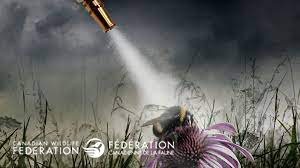
Although finches primarily enjoy eating seeds, they do add small insects to the menu during the summer months. However, if you use pesticides in your backyard to keep insect populations in check, there’s a chance that finches will ingest the pesticide too. So go ahead and say goodbye to pesticides altogether! Don’t forget to buy neonic-free plants as their seeds are also harmful to birds.
4. Give them a home sweet home.
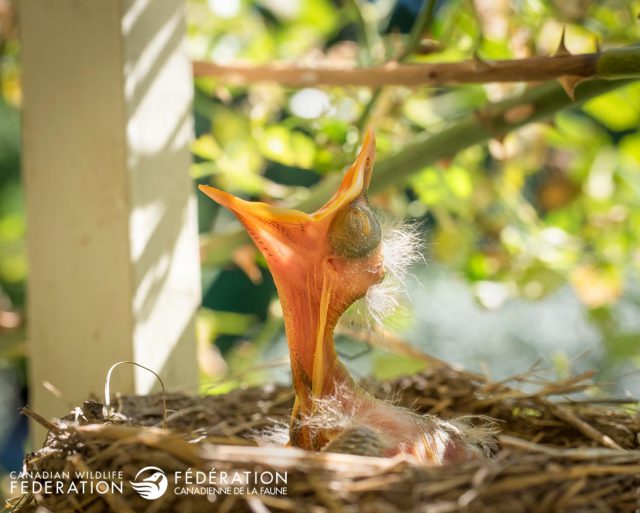
Encourage finches to nest in your garden by offering a diversity of their favourite nesting spots. While some finches will happily nest in tall trees, many prefer shrubs. If you want to give goldfinches a special spot to call home, note that they build their nest where branches meet. Why? Their nests are shaped like small cups! So bushes and trees like dogwood, buttonbush, hawthorn and elderberry are good bets!
5. Fill their tummies.
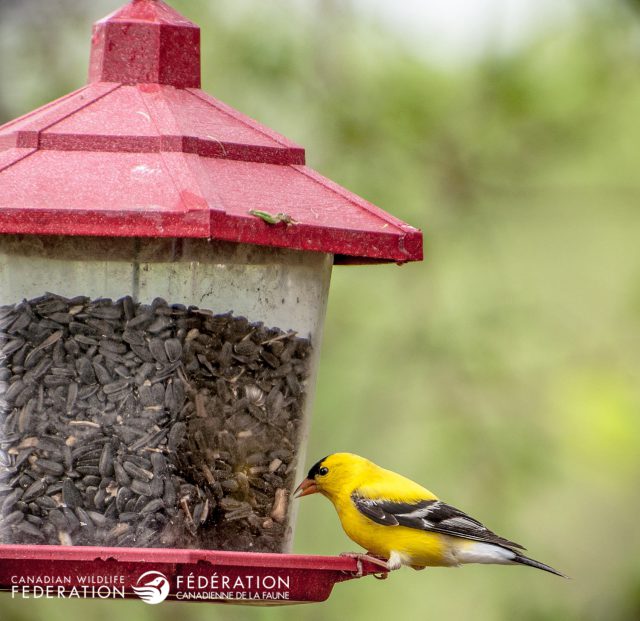
Finches have a particular hankering for seeds. Not only can you fill your birdfeeder with seeds to keep them flocking to your backyard, there are plenty of seed producing plants that they adore. They love to nosh on spruce, pine, hemlock, coneflower, aster, thistle and sunflower seeds. They’ll even snack on tree buds and maple sap at times. In the summer, they’ll add small insects to the menu.
6. Feather their nest.
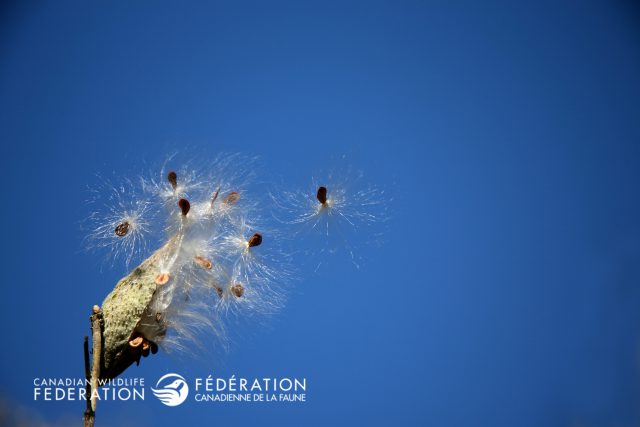
There are plenty of ways you can help a finch build her nest. They use a wide variety of materials to build their nests including the downy fibers of thistles, milkweed, cattails, dandelions and asters. If you decide to plant thistles or milkweed in your garden, don’t forget to check in with your province as some of them can be invasive or noxious! Some finches also use spider webs to build their nests so avoid destroying them.
7. Cover your windows.
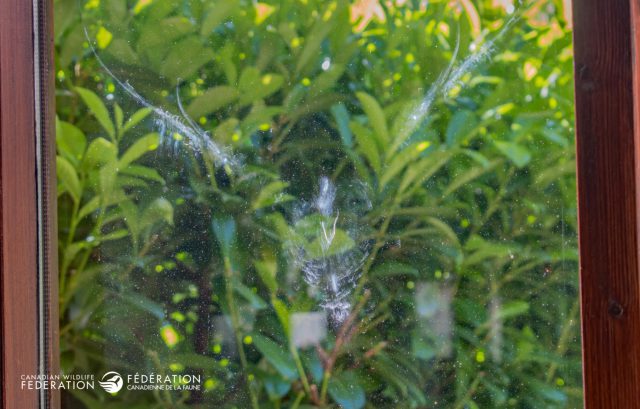
Sadly, many finch species have untimely deaths due to window collisions. They’re not alone. In fact, millions of birds die every year from collisions. If you want to make your windows easier to see for your winged friends, you can apply a dense pattern on the exterior of the glass. The trick? Make sure you have a gap between the markers of five centimetres or less.

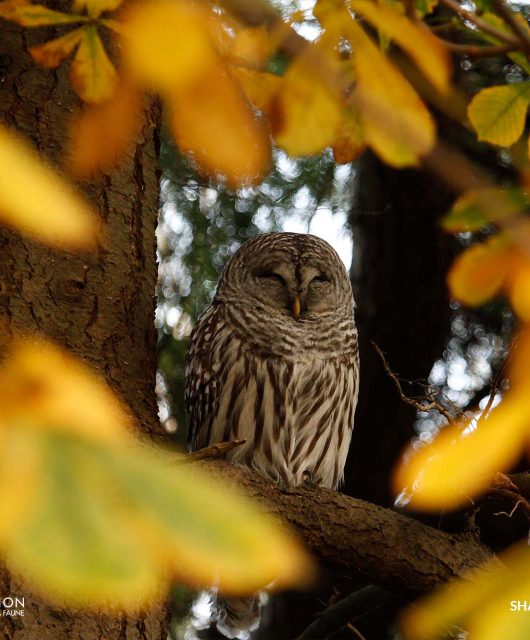
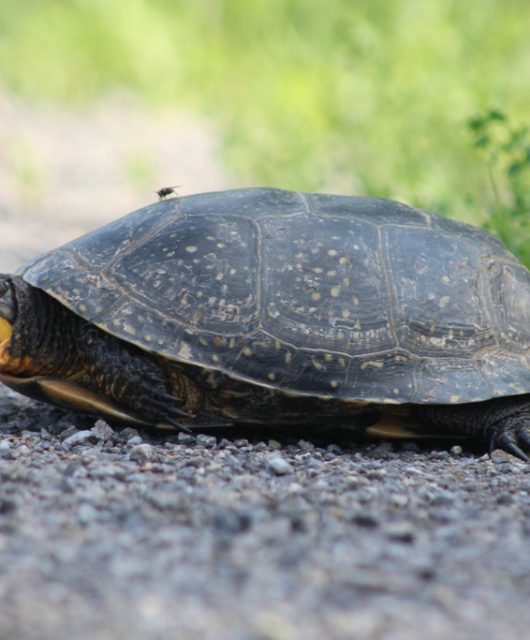
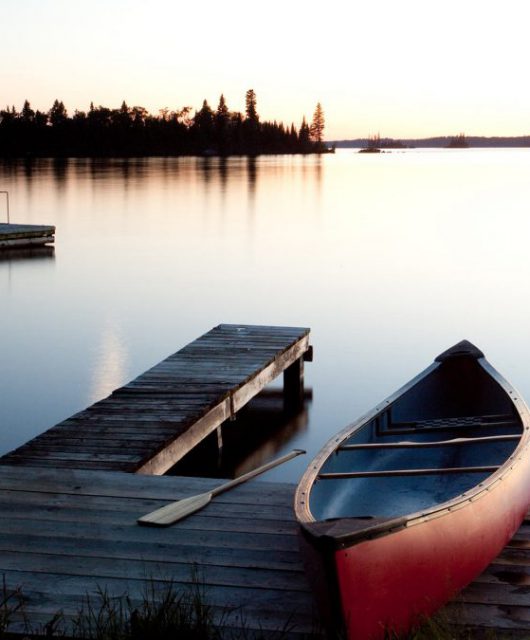
5 comments
To prevent birds hitting my windows I suspend that black netting with 1/2″ to 3/4″ square holes in it, that’s normally used to cover fruit trees. Hang it about 2 ft. out from the window, it’s virtually invisible from the inside and the outside. Works perfectly!
Great articles. During covid..shopping is more challenging..perhaps add window stikers to your available products.
Thanks for keeping us updated.
Is it ok to feed wild birds like finches? Are they not becoming dependent? I did for about a year and the yard got crowded with pine siskins, two which I had to take the the Wildlife Rescue for salmonella contamination), pigeons, flickers, sparrows , hawks to hunt the birds, etc. Rats came too. Yikes!
I took down the feeder as asked by Wildlife Rescue. Now I am not sure if this was a good idea, yet, I do want to help those that need it.
Hi Mia
This might give you a few more answers: https://cwf-fcf.org/en/about-cwf/faq/faqs/is-bird-feeding-safe.html